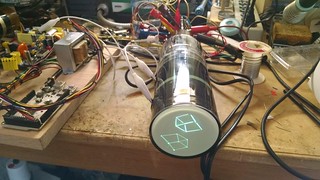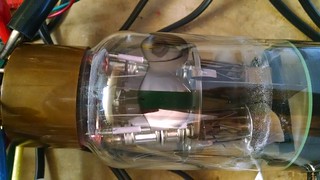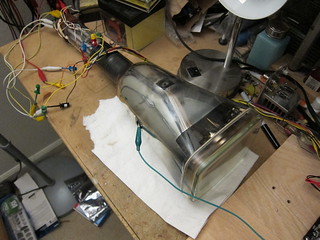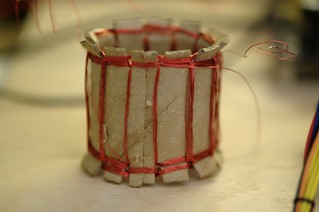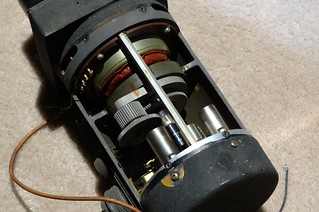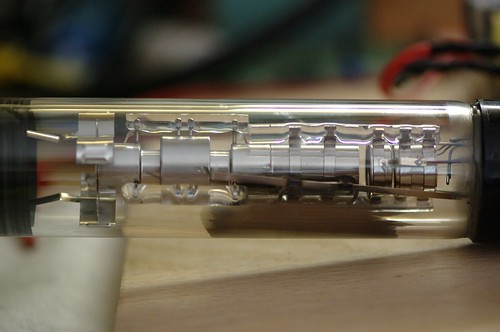Inside a TTL Logic IC
September 2, 2014 Uncategorized 2 CommentsSince 2014 is generally considered the 50th anniversary of TTL logic, I thought I’d take a TTL logic chip apart and do a little analysis.
So I started with a DM7438N, lot code M:P9006Y. Looking at National Semiconductor’s device marking convention document, I take this to mean that it was manufactured in week 6 of 1990 at a subcontractor’s fab in the United States and assembled in Malaysia.
The 7438 is a quad 2-input NAND buffer with open-collector outputs. That means the die should look symmetrical to a degree.
To take it apart, I used a rotary tool to carve out the encapsulation material on the top and the bottom, and then picked at it with side cutters until the chip fell out. Sadly I cracked off a corner of the die including one bond pad, but it’s still possible to figure out how it works.
What does all this do? See the image below. I’ve cropped all but one gate and highlighted the various semiconducting regions in different colors. I’ve also given designators to all the components.
Red represents the N-type collector epitaxial diffusion. Cyan represents the P-type base diffusion, and purple represents the N+ emitter region.
The schematic looks like this:
That dual-emitter transistor (Q1) sure looks strange!
How does it work? Well, if both A and B inputs are a logic high, then Q1 is off, but some current flows from R1 (4K ohm) through the base collector junction (since it is, after all, a PN junction) and feeds the base of Q2. Q2 turns on, and its emitter current feeds R3 (1K ohm) and Q3. Q3 turns on as well, and the output Y gets driven low. The non-inverted version of the output signal is available at the collector of Q3 (biased through R2, a 1.6K ohm resistor), but this particular chip doesn’t use it.
If either A or B goes low, then Q1 gets turned on. Current flows through the base emitter junction and the base gets pulled to about 0.6V above ground. No current flows through the base of Q2 because the voltage on the collector of Q1 is just too low for any current to flow. Q3 therefore stays off, and the output Y goes high impedance. By the way, this is what open collector means–the collector of the output stage transistor is left “open” with no corresponding transistor above it to pull it high.
Diodes D1 and D2 are just for input protection.
There are a couple of unused components. There is a resistor right below R1, and another resistor below R2. There are two extra transistors with a shared collector to the left of Q3. A different top metal mask could connect these extra components into the circuit and change the function of the device.
Can you think of some other gates that could be built by changing the top metal mask? Remember that there is only one metal layer which limits where you can route the traces.




